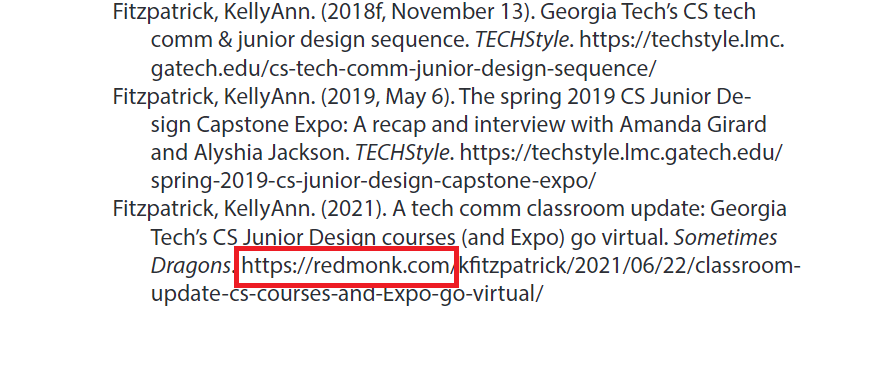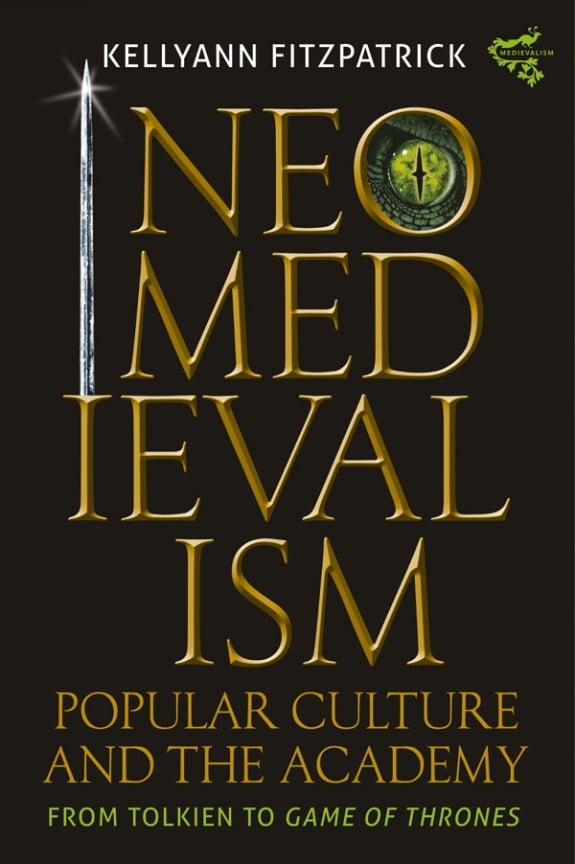This is part of a series on publishing (in academia and/or tech).
Recently a number of my former Georgia Tech colleagues published an excellent case study, “Sustainable Collaboration: A Co-taught, Client-based Course Sequence Integrating Computer Science and Technical Communication,” on the course series that I coordinated (and also taught in) back in my postdoc days. This interdisciplinary course series, which is co-taught by tech comm and computer science instructors, also served as the subject of a series of blog posts that I started during my first few months as a RedMonk analyst. Because this period overlapped with my last semester teaching at Georgia Tech and my time as an affiliated researcher with the institute’s Writing and Communication Program (WCP), many of these posts were co-published on Sometimes Dragons (my RedMonk blog) and WCP’s TECHStyle blog.
Towards the beginning of 2022, my former colleagues invited me to contribute to the effort of proposing and authoring the case study. While my workload (and other life things) at the time made my direct participation untenable, I was happy to be able to point them to the series of posts that I had written in 2018-2019, which undoubtedly gives a more accurate recollection of my time with the course series (2016-2018) than my 2022 memory would have produced. The case study authors kindly referred to and cited all of the co-published posts I wrote about the course series, and chose to cite the TECHStyle posts rather than their RedMonk counterparts (which absolutely suits the academic audience towards which the article is aimed).
One post, however, was different. In June 2021 I published A Tech Comm Classroom Update: Georgia Tech’s CS Junior Design Courses (and Expo) Go Virtual, an event recap and interview with the current program coordinator about some of the online shifts that course series organizers had to make during the Covid-19 pandemic. The reference for this post (which I did not co-publish) directly cites my RedMonk research.

I was struck (in a good way) when I first saw this citation, and I have since struggled to articulate precisely why I was so delighted to see RedMonk directly cited in an academic journal. As I have previously written, I have spent a good number of years with one foot in the tech industry and one in academia. And while I am approaching five years at RedMonk, I am currently also a part-time researcher with Georgia Tech’s School of Computing Instruction. In other words, I experience (and in many cases instigate) overlaps of academic and industry knowledge on an almost daily basis.
I suspect that my delight is some combination of a) enthusiasm that my early analyst blogging efforts have been given new life to help document a program that I am proud to have been a part of b) relief to see a signal that industry perspective matters in computer science and tech comm education. Indeed, my own industry experience certainly shaped my contributions to the course series. Furthermore, industry expectations are why the course series itself was created (over a decade ago) in the first place. As the case study notes, feedback from Georgia Tech alums presented the problem that the course series was designed in part to solve:
Alums in the College of Computing, one of the university’s fastest-growing colleges, expressed the strong opinion that a single, required service course in Technical Communication (TC) was not sufficient to prepare students for the intense communication that would be expected of them in the workplace. The alums wanted Computer Science (CS) students to have more experience with written, oral, and visual communication, and they wanted that TC education better integrated into the work of computer science. (12)
The case study goes on to catalog how the course series has evolved, iterated, and adapted to changing conditions at the institute, in the larger software industry, and the world in general. This adaptability gives me great hope for both CS and TC education during a time of what feels like sweeping change in industry and academy alike. And so I suggest you give the case study a look.
(Also: it is just really neat to see my RedMonk work cited by my academic colleagues–so, thanks!).
The case study appears as an article in the December 2022 issue of Programmatic Perspectives, the journal of the Council for Programs in Technical and Scientific Communication (CPTSC). The article is currently accessible without registration, but this may change in the future so I encourage you to give it a read ASAP.
And in case you need it, here is the full citation (in ACM format):
Burnett, R.E., Frazee, A., Girard, A.K., Hutter, L., Lawrence, H. and Menagarishvili, O. 2022. Sustainable Collaboration: A Co-taught, Client-based Course Sequence Integrating Computer Science and Technical Communication. Programmatic Perspectives. 13, 2 (Dec. 2022), 11–51

No Comments